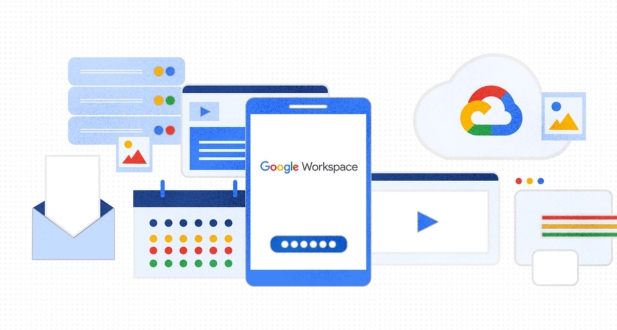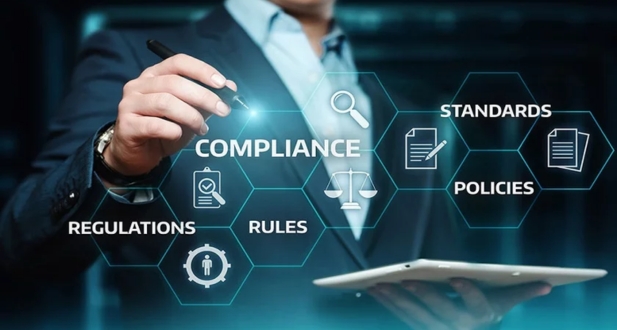Google Workspace best security practices in bangalore
In the digital age, where information is a valuable asset, ensuring the security and compliance of your business operations is paramount. Google Workspace, a suite of cloud computing, productivity, and collaboration tools, has emerged as a powerhouse in meeting the demands of modern businesses. In this comprehensive guide, we will delve into the intricate details of Google Workspace’s security and compliance features, highlighting the expertise that makes it a reliable choice for organizations worldwide.
Understanding the Landscape of Google Workspace
Google Workspace, formerly known as G Suite, encompasses a range of applications such as Gmail, Google Drive, Google Calendar, Google Docs, and many more. Its cloud-based nature facilitates seamless collaboration, enabling teams to work together irrespective of geographical location. However, the convenience of cloud collaboration comes with the responsibility of ensuring robust security and compliance measures.
Gmail: Google Workspace’s email service provides a reliable and feature-rich platform for communication within and outside the organization.
- Google Drive: A cloud-based storage solution that allows users to store and share documents, spreadsheets, and other files. It promotes collaborative work by enabling multiple users to edit documents simultaneously.
- Google Calendar: An efficient tool for scheduling events, meetings, and appointments. It facilitates easy coordination among team members and helps in managing time effectively.
- Google Docs, Sheets, and Slides: These are productivity applications that enable real-time collaboration on documents, spreadsheets, and presentations. Multiple users can work on the same file simultaneously, enhancing teamwork.
- Google Meet: A video-conferencing application that supports virtual meetings and collaboration. It integrates seamlessly with other Google Workspace apps.
- Google Forms: A tool for creating surveys and forms, fostering efficient data collection and feedback mechanisms.
- Google Sites: Facilitates the creation of internal websites, making it easy for teams to share information and collaborate on projects.
Security Features: Fortifying the Digital Fortress
Data Encryption:
Google Workspace prioritizes data security through advanced encryption methods. During data transmission, Transport Layer Security (TLS) encryption is employed for emails, and Hypertext Transfer Protocol Secure (HTTPS) is used for secure data transfer. These encryption measures act as a protective shield, ensuring the confidentiality and integrity of your information.
Two-Factor Authentication (2FA):
Google Workspace adds an extra layer of defense with Two-Factor Authentication (2FA). Even if login credentials are compromised, unauthorized access becomes significantly more challenging, as it requires an additional verification step. This enhances the overall security posture by minimizing the risk of unauthorized account access.
Mobile Device Management (MDM):
Recognizing the prevalence of mobile devices in modern business, Google Workspace incorporates Mobile Device Management (MDM) tools. These tools empower administrators to efficiently manage and secure mobile devices used within the organization. This ensures data integrity and guards against unauthorized access, especially crucial in an era where mobile devices are integral to business operations.
Security Dashboard:
The Security Dashboard serves as a centralized hub for security analytics. Administrators gain valuable insights into potential threats and suspicious activities across the Google Workspace environment. This proactive approach enables swift identification and response to security incidents, mitigating risks before they escalate.
Advanced Threat Protection (ATP):
Google Workspace integrates Advanced Threat Protection (ATP) to identify and neutralize potential security threats. This includes real-time scanning of email attachments and links, offering an additional layer of defense against phishing attacks, malware, and other malicious activities. ATP enhances the overall security posture by actively identifying and mitigating threats in real time.
Identity and Access Management:
Efficient management of user identities and access controls is paramount for maintaining a secure digital environment. Google Workspace provides robust tools for Identity and Access Management, allowing administrators to manage user permissions effectively. This ensures that employees have access only to the data and resources relevant to their roles, minimizing the risk of unauthorized access and data breaches. This comprehensive approach contributes to a more secure and well-controlled digital workspace.
Compliance Expertise: Navigating Regulatory Waters
GDPR Compliance:
With the implementation of the General Data Protection Regulation (GDPR), businesses handling European Union citizens’ data must adhere to stringent privacy and security standards. Google Workspace ensures GDPR compliance by providing tools and features that allow organizations to manage and protect data by these regulations. This includes features for data transparency, user consent management, and robust security measures.
HIPAA Compliance:
For organizations operating in the healthcare sector, compliance with the Health Insurance Portability and Accountability Act (HIPAA) is crucial. Google Workspace has implemented specific measures to meet HIPAA standards, ensuring that healthcare professionals can leverage its collaborative tools securely without compromising patient data privacy. This involves features like secure communication channels, access controls, and audit trails to monitor data access and modifications.
- SOC 2 Type II Certification:
Google Workspace has obtained the Service Organization Control (SOC) 2 Type II certification, providing assurance to users about the platform’s commitment to data security, availability, processing integrity, confidentiality, and privacy. This certification is a testament to the rigorous standards Google Workspace adheres to in managing and securing user data.
- ISO 27001 Certification:
The International Organization for Standardization (ISO) 27001 certification signifies that Google Workspace adheres to globally recognized information security standards. This certification reflects the platform’s dedication to maintaining a robust security management system, covering aspects such as risk assessment, data encryption, and ongoing security monitoring.
- FERPA Compliance:
Educational institutions in the United States handling student data must comply with the Family Educational Rights and Privacy Act (FERPA). Google Workspace provides specific tools and features to assist educational organizations in maintaining FERPA compliance. This includes secure storage and sharing of student information, audit trails for data access, and controls to ensure that only authorized individuals have access to sensitive educational data.
Expertise in Action: Real-world Case Studies
City of Los Angeles:
- Challenge: The City of Los Angeles faced challenges in collaboration and productivity with its existing tools.
- Solution: Migrating to Google Workspace provided a comprehensive solution for improved collaboration and productivity.
- Outcome: The city’s IT administrators highlighted the robust security features of Google Workspace, emphasizing the platform’s ability to safeguard sensitive municipal data.
Whirlpool Corporation:
- Challenge: Whirlpool, as a global leader in home appliances, needed streamlined communication across its extensive operations.
- Solution: Adopting Google Workspace helped Whirlpool achieve more efficient communication and collaboration.
- Outcome: Whirlpool praised Google Workspace for its compliance expertise, particularly its ability to meet international data protection standards. This highlights the platform’s suitability for large enterprises with global operations.
Salesforce:
- Challenge: Salesforce, a leader in customer relationship management, aimed to enhance collaboration among its teams.
- Solution: Leveraging Google Workspace provided Salesforce with the tools needed to strengthen team collaboration.
- Outcome: The seamless integration of security and compliance features within Google Workspace played a pivotal role in Salesforce’s decision to adopt the platform. This emphasizes the importance of a unified solution that caters to both collaboration and security needs for organizations operating at scale.
Best Practices: Harnessing the Full Potential of Google Workspace
Regular Training and Awareness Programs:
- Customized Workshops: Conduct regular workshops or training sessions to educate users on the security features and best practices within Google Workspace. Tailor these sessions to address specific needs and challenges faced by your organization.
- Documentation and Resources: Provide comprehensive documentation and online resources that users can refer to at any time. This helps reinforce the training and serves as a reference guide for security-related queries.
Customized Security Policies:
- Risk Assessment: Conduct a thorough risk assessment to identify the unique security challenges and requirements of your organization. This includes understanding the nature of your data, potential threats, and compliance obligations.
- Granular Controls: Leverage the granular security controls offered by Google Workspace to tailor policies based on specific user roles, departments, or data types. This ensures that security measures are precisely aligned with organizational needs.
Continuous Monitoring and Evaluation:
- Security Audits: Regularly conduct security audits within Google Workspace to assess the effectiveness of existing security measures. This includes reviewing access logs, permission settings, and any reported security incidents.
- Incident Response Plan: Develop and maintain a robust incident response plan. Regularly test and update this plan to ensure that your organization is well-prepared to handle security incidents promptly and effectively.
- Feedback Mechanism: Establish a feedback mechanism to encourage users to report any security concerns or incidents promptly. This fosters a culture of shared responsibility for security within the organization.
Integration with Third-Party Security Solutions:
- Supplemental Security Tools: Depending on the specific security needs of your organization, consider integrating Google Workspace with third-party security solutions. This could include advanced threat detection, data loss prevention, or identity management tools that complement Google Workspace’s built-in features.
Regular Updates and Communication:
- Stay Informed: Keep abreast of updates and new features within Google Workspace. Regularly communicate these changes to users, emphasizing any security enhancements or new tools that can contribute to a more secure environment.
- Security News and Threat Intelligence: Stay informed about the latest security threats and trends. Incorporate this knowledge into your security strategy, ensuring that your organization remains proactive in addressing emerging challenges.
Continuous Improvement and Adaptation
The digital landscape is dynamic, with new threats and vulnerabilities emerging regularly. Recognizing this, Google Workspace adopts a strategy of continuous improvement and adaptation to stay ahead of potential security challenges. This involves:
Regular Updates and Patching:
Google Workspace prioritizes regular updates and patching to address known vulnerabilities and enhance security features. This proactive approach ensures that organizations using the platform have the latest security defenses to protect against evolving threats. By staying current with software updates, Google Workspace helps mitigate the risk of exploitation of known vulnerabilities.
Security Awareness Training:
Google provides comprehensive resources and training materials to educate users and administrators about security best practices. These training programs aim to cultivate a strong security awareness culture within organizations. By empowering users with knowledge about potential threats, phishing attacks, and safe online practices, Google Workspace users can actively contribute to the overall security strategy. Educated users are less likely to fall victim to common security pitfalls, enhancing the overall resilience of the organization.
Collaboration with Security Communities:
Google Workspace actively collaborates with the broader security community, participating in information exchange, sharing threat intelligence, and collaborating on the development of effective countermeasures. This collaborative approach is essential for staying ahead of emerging threats and understanding the evolving landscape of cybersecurity. By tapping into the collective knowledge of the security community, Google Workspace can anticipate potential risks and respond more effectively to emerging challenges.
Threat Intelligence Integration:
Google Workspace integrates threat intelligence into its security measures. By leveraging insights from various sources, including its collaboration with security communities, Google can identify patterns, trends, and potential threats. This proactive integration allows for quicker detection and response to emerging security issues.
Incident Response Planning:
Google Workspace is equipped with robust incident response planning to effectively manage and mitigate security incidents. This involves predefined processes and procedures to handle security breaches, ensuring a swift and coordinated response. By having a well-defined incident response plan, Google Workspace aims to minimize the impact of security incidents and learn from each event to improve future security measures.
Compliance and Standards Adherence:
Google Workspace aligns with industry standards and compliance requirements, ensuring that its security practices meet or exceed established benchmarks. This commitment to compliance helps organizations using Google Workspace maintain a secure environment and adhere to regulatory standards relevant to their industries.
Google Workspace’s approach to continuous improvement and adaptation in security involves a multifaceted strategy that includes regular updates, comprehensive training, collaboration with the security community, threat intelligence integration, incident response planning, and adherence to industry compliance standards. This comprehensive approach aims to create a resilient and secure digital environment for organizations leveraging Google Workspace.
Fortifying Collaboration: Security in Google Workspace Apps
A. Gmail Security Features:
Email remains a primary communication channel for businesses, making the security of Gmail a top priority. Google Workspace incorporates advanced threat protection features, such as phishing and malware detection, to safeguard against malicious attacks. Additionally, data loss prevention (DLP) policies empower organizations to control the sharing of sensitive information via email, preventing inadvertent leaks.
B. Google Drive Security:
With Google Drive serving as a central repository for files and collaborative work, its security features are instrumental. Encryption at rest, access controls, and audit logs contribute to a secure environment. Advanced sharing settings allow organizations to define and monitor the level of access users have, ensuring data is shared only with authorized personnel.
C. Secure Video Conferencing:
The surge in remote work has elevated the significance of virtual meetings. Google Meet, a part of Google Workspace, integrates security features like end-to-end encryption, meeting access controls, and secure meeting links. These measures foster a secure collaboration environment, mitigating the risk of unauthorized access to sensitive discussions.
Google Workspace Compliance Features
Regulatory Compliance:
Google Workspace aligns with key regulatory standards such as the General Data Protection Regulation (GDPR) and the Health Insurance Portability and Accountability Act (HIPAA). This commitment to compliance allows organizations, especially those in regulated industries such as healthcare and finance, to confidently leverage Google Workspace while meeting legal requirements.
Data Retention and eDiscovery:
Google Workspace provides robust data retention and eDiscovery capabilities. Organizations can establish and enforce data retention policies to meet specific legal and regulatory obligations. The eDiscovery feature allows administrators to search across emails, documents, and other content, making it easier to identify and retrieve relevant information for legal purposes.
Audit Logging:
To enhance security and compliance efforts, Google Workspace maintains detailed audit logs. These logs track user activities and changes made within the system. This not only assists organizations in demonstrating compliance during audits but also serves as a valuable tool for investigating security incidents and understanding the flow of data within the platform.
Data Ownership and Portability:
One crucial aspect of compliance is ensuring that organizations maintain control over their data. Google Workspace emphasizes data ownership, assuring organizations that they retain control and ownership of the information they store on the platform. Additionally, Google provides tools for data export, facilitating easy migration of data out of the platform if an organization decides to transition to a different solution or service.
Conclusion: Empowering Businesses with Confidence
In the realm of cloud-based collaboration and productivity tools, Google Workspace stands out not only for its user-friendly interface but also for its unwavering commitment to security and compliance. The platform’s expertise in encrypting data, implementing advanced threat protection, and meeting a spectrum of regulatory requirements makes it a preferred choice for businesses across industries.
By understanding and harnessing the full potential of Google Workspace’s security and compliance features, organizations can empower their teams to collaborate with confidence, knowing that their data is secure and regulatory requirements are met. As technology continues to evolve, Google Workspace remains at the forefront, setting the standard for secure and compliant cloud collaboration.
[/fusion_text]Google Workspace employs robust security measures, including encryption in transit and at rest, two-factor authentication, and advanced threat detection to safeguard sensitive information.
Yes, Google Workspace allows administrators to set granular access controls, defining who can view, edit, or share specific documents, ensuring data confidentiality.
Yes, Google Workspace adheres to various industry standards and compliance certifications, including ISO 27001, HIPAA, and GDPR, ensuring data handling meets regulatory requirements.
Google Workspace implements advanced phishing detection algorithms and provides users with security warnings, reducing the risk of falling victim to phishing attempts.
Yes, administrators have access to audit logs that capture user activities, helping to monitor and track changes to data, access attempts, and other relevant events.
Google Workspace includes data loss prevention (DLP) policies that can be configured to prevent the sharing of sensitive information and protect against accidental data leaks.
Google Workspace automatically backs up data and provides robust recovery options, ensuring minimal data loss in case of accidental deletion or system failures.
Yes, administrators can configure Transport Layer Security (TLS) for email encryption in transit and use S/MIME to encrypt emails end-to-end within Google Workspace.
Google Workspace offers mobile device management (MDM) capabilities, allowing administrators to enforce security policies, such as device encryption and passcode requirements.









